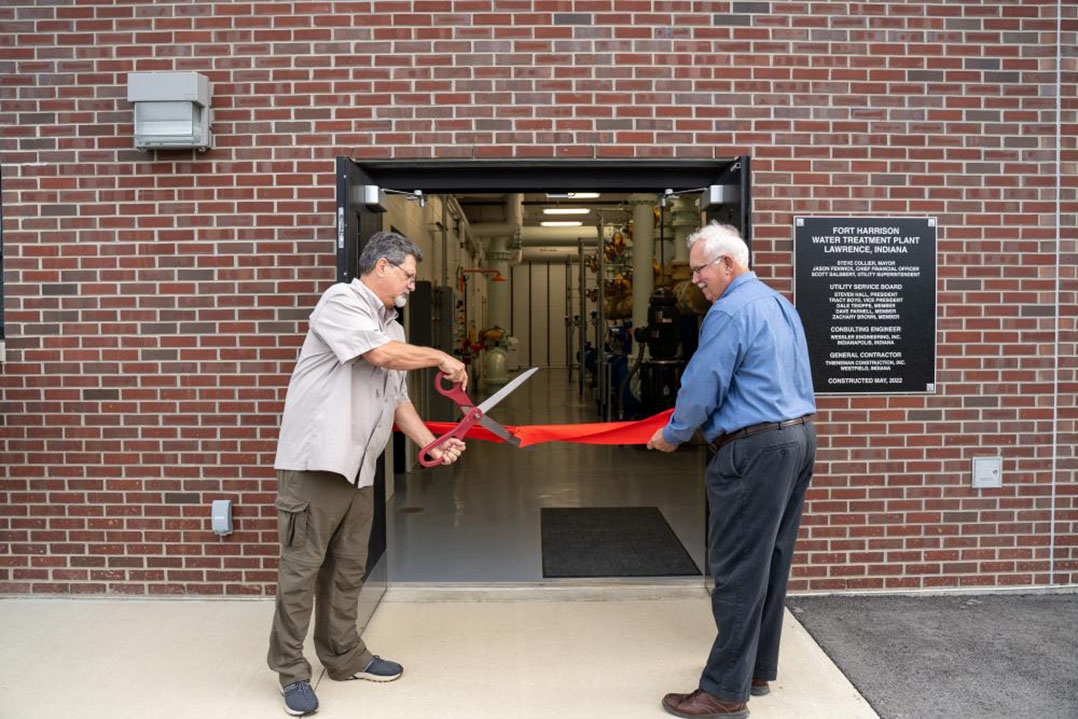The Fort Harrison Water Treatment Plant is one of three serving the water needs of Lawrence residents. A major renovation of the facility was substantially completed in spring of 2022, but the city held off on a ribbon cutting until June 30.
Utilities Superintendent Scott Salsbery said parts of the facility required brand-new construction, and the rest was renovated.
“The filter building is completely new from the ground up, as well as the storage building,” he said. “And then the 3-million-gallon reservoir was completely renovated. We had to go inside and do a bunch of work on the inside of that.”
Salsbery said the reservoir dates back to “early 19-teens.” It required a lot of concrete work to repair the interior.
“And then the pump station where our high-service pumps are located, that was originally installed in 1994, I believe,” he said. “So the building itself had a lot of cosmetic improvements, and then we redid a lot of the plumbing on the inside, new electrical panels, whatnot, all of that was renovated inside.”
Salsbery said renovations to the city’s water treatment systems started in 2017 with the help of a low-interest loan from the state — and after approval of a water-rate increase, which allowed the city to borrow money for improvements. The Richart Street water treatment facility was the first to be renovated, he said. Next up were the Fort Harrison and Indian Lake plants.
An addition to the Fort Harrison plant is aeration technology, which Salsbery said improves the filtering capabilities of the system.
“We’re a 100-percent groundwater system, so we do have a lot of iron manganese,” he said. “The aeration helps to accelerate the conversion of the soluble iron and manganese into particulate matter that can be filtered out. It also helps get the hydrogen sulfide gas out of there, which you sometimes encounter. It’s kind of a rotten-egg smell in groundwater. So that’s helped on the water quality.”
The city also increased the capacity of the Fort Harrison plant from 3 million to 4.3 million gallons per day of potable water. Salsbery said the average daily demand for water is about 4 million gallons. With three plants able to produce more water than the community needs on a daily basis, he said the life of each facility is optimized and the community has backups in place in case one plant has to be taken offline for any reason.
The city also is working on replacing aging water mains throughout the community, he said, and there’s ongoing work to improve sanitary and storm sewer systems, as well. In all, he estimates the city has invested upwards of $40 million in its water and wastewater systems since 2017.




